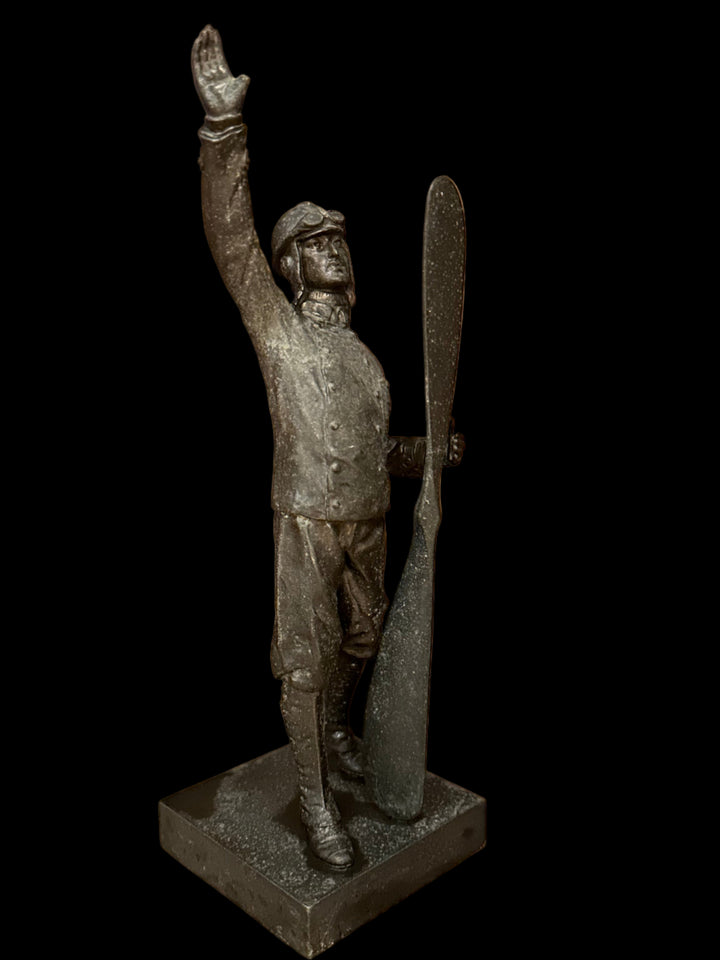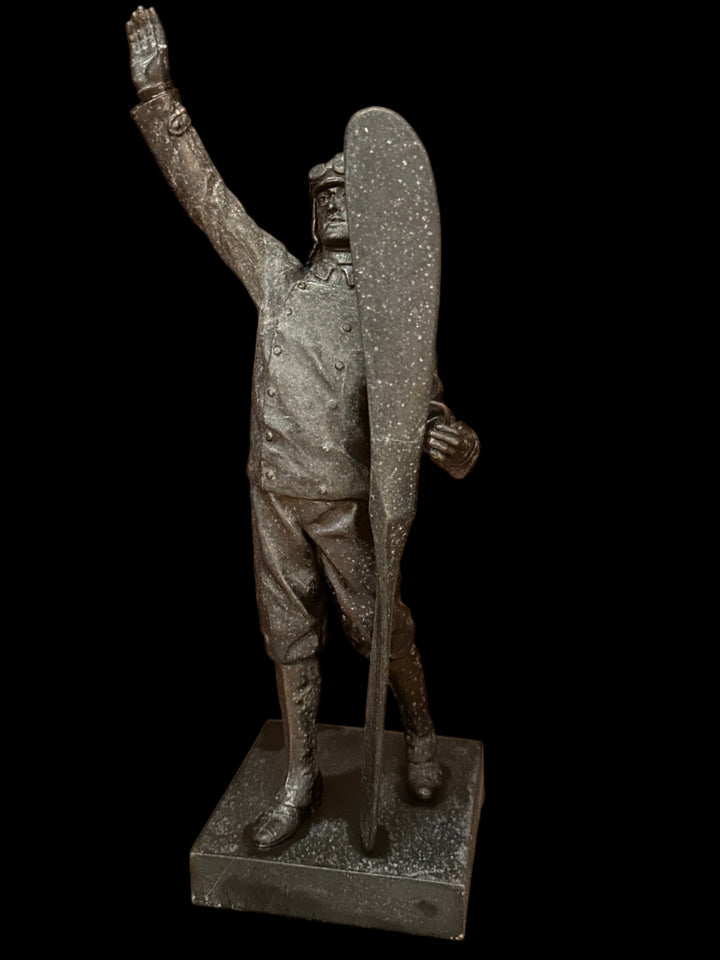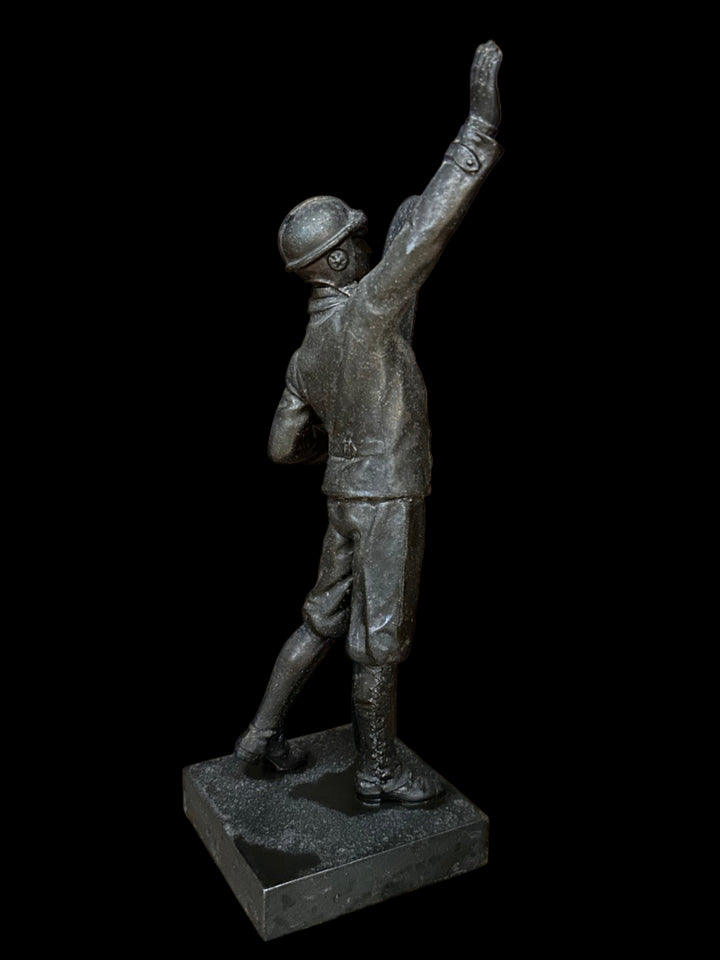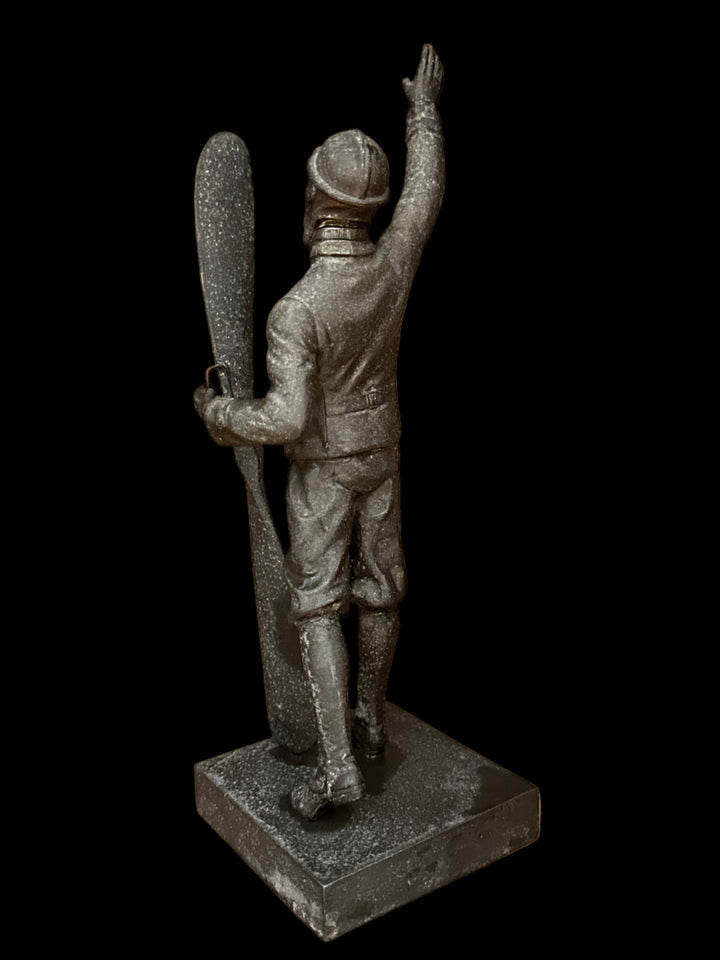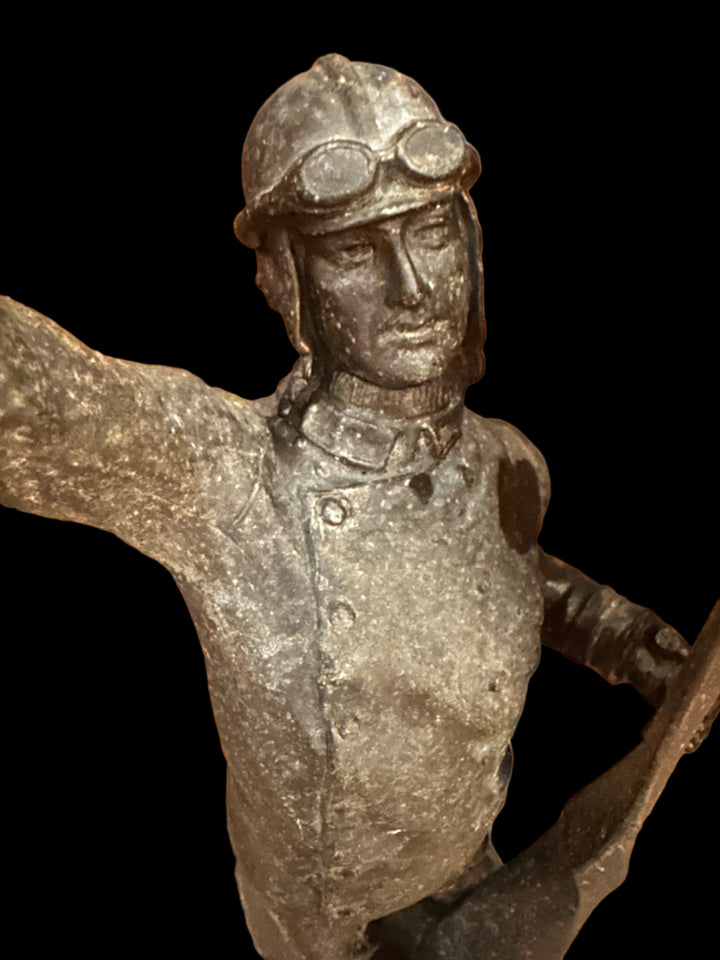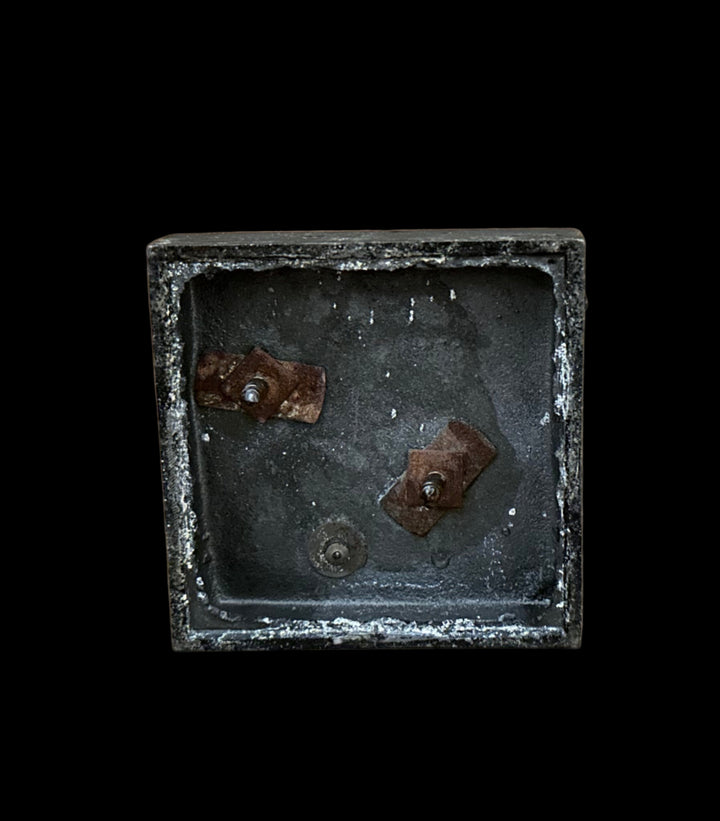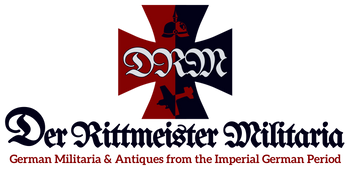Bronze Aviation Figure of WWI Pilot with Propeller
- Regular price
- $675.00
- Sale price
- $675.00
- Regular price
SKU: 18-79
Presented here is an evocative bronze statue of a World War I-era aviator, standing tall at 10.5 inches (26.7 cm) with a solid square base measuring 4 x 4 inches. The figure depicts a pilot in full early flying kit, clad in a double-breasted tunic and tall field boots, with a flying cap and integral goggles pushed up upon the brow. His right arm is raised, a pose commonly associated with the dramatic flair of period sculptures and commemoratives, while his left hand grasps a tall aircraft propeller that nearly matches his own height.
The piece is cast in bronze (weighing 2.11 lbs), mounted securely on a squared base with underside fastening visible via two aged retaining nuts, exhibiting mild surface oxidation. The patina is consistent with age, showing a darkened, mottled surface that enhances the sculptural depth. No hallmarking, inscriptions, or foundry stamps are visible, suggesting it may have been an artisan studio casting or produced in limited numbers for collectors, veterans, or aviation associations of the interwar period.
The subject matter strongly evokes the romanticized image of early aviators of the Great War—figures such as Manfred von Richthofen, Oswald Boelcke, or Ernst Udet—and would have appealed to the aviation enthusiast or veteran’s circles of the 1920s–30s. Statues of this type were often placed in officers’ clubs, regimental messes, or sold privately to commemorate the “Knights of the Air.”
Condition:
The piece remains structurally sound with no cracks or repairs. The bronze shows natural age patina and spotting consistent with storage. Base is intact with minor surface wear. Absence of hallmarking makes precise attribution difficult, but it remains a highly collectible representation of WWI aviation.
Historical Context:
During the interwar years, the aviators of the First World War were immortalized in literature, film, and art as modern-day knights. Their chivalry in combat and daring in the skies stood in stark contrast to the mechanized slaughter of the trenches. Collectors, veterans, and patriotic organizations often commissioned or purchased bronzes like this one to celebrate the spirit of the early flying corps. They were symbols not just of aviation triumphs but of national pride and technological progress.
This is a solid, well-executed aviation bronze. While lacking hallmarking or named association keeps it below higher-priced commemorative bronzes, its quality, size, and subject matter will strongly appeal to collectors of WWI militaria and early aviation art.
